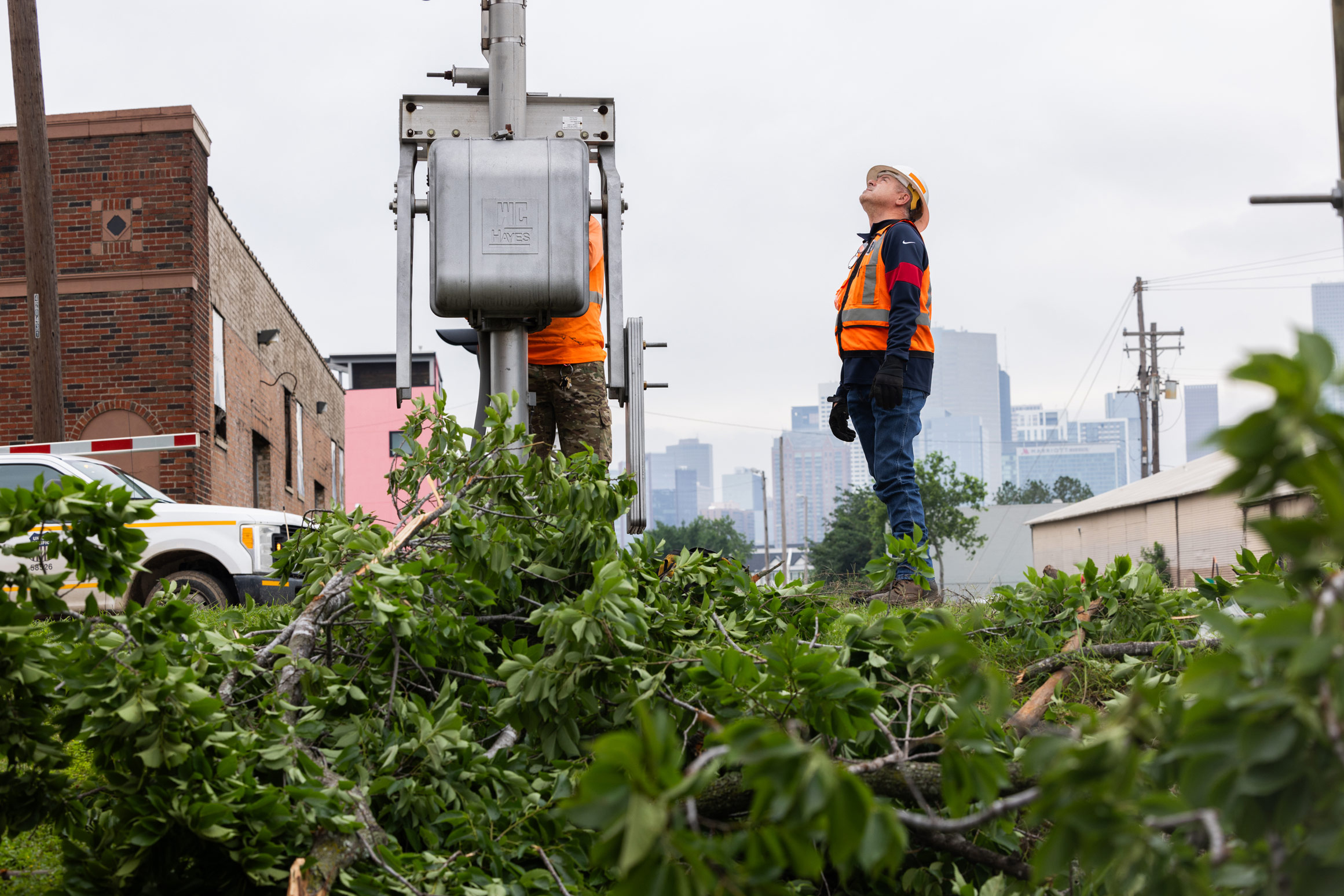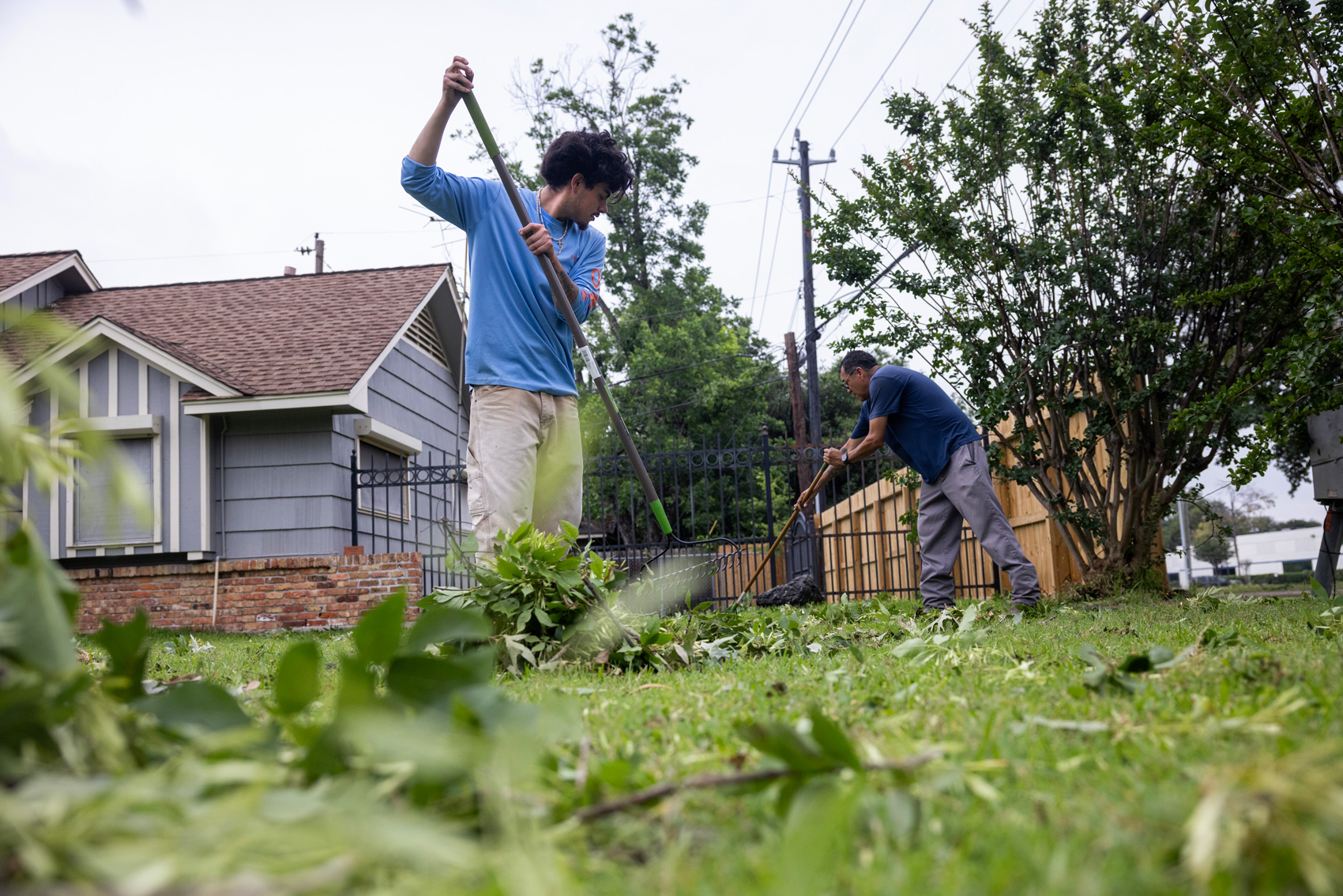|
Getting your Trinity Audio player ready...
|
It took only minutes for a typical May evening in Houston to unravel into disaster.
At 5 p.m., the city was calm. But by 5:30 p.m., the skies had darkened, the temperature plummeted and Houston suddenly felt the full force of one of the most severe, surprising thunderstorms to hit the area in decades.
The fierce thunderstorms and at least one tornado that roared through Greater Houston on Thursday, producing winds in the neighborhood of 100 mph, startled seasoned forecasters who mostly expected the approaching weather to dissipate.
In interviews, they described an uncommon mix of weather events as the storms moved east of Houston, intensified over the Cypress area and ultimately pounded parts of downtown. A verified tornado in Cypress produced wind speeds reaching 110 mph.
The high winds knocked down power lines across the region and left nearly a million homes and businesses without electricity, some of which may take weeks to see power return. They also pummeled downtown high-rises, causing windows to shatter and sending glass crashing down to the street.

Meteorologists cautioned Friday that the event, which left at least seven people dead from wind-related injuries, was not unprecedented. About a dozen tornadoes touched down in Greater Houston in May 1983, when eight people died in the storms.
Still, the odds of similar disasters could increase in the future as temperatures continue to rise due to global climate change, they said.
“This was a rare but not unprecedented storm,” said Matt Lanza, a Houston-based meteorologist and managing editor of the website Space City Weather. “But you do have to add that it does tend to fit the general theory and blueprint of climate change.”
Powerful Houston storm caught city by surprise
For Lanza, there was “nothing unique” about the line of thunderstorms that first formed northwest of the city. Similar storm formations typically arrive every spring and fall, he said.
Lanza knew multiple factors could intensify the storms, such as a cold front moving into the area – a “trigger” for thunderstorms during warm months like May – and a highly unstable atmosphere over Houston.
But those elements were in place earlier this week, when forecasters warned Monday of the potential for tornadoes, damaging wind and large hail. Those predictions ultimately did not materialize.

related to storms
How to find resources to cope with the Houston-area power outage and storm damage
by Angelica Perez / Staff Writer
The “busted forecast” made Lanza skeptical that Thursday would be any different, he said. One of his co-authors at Space City Weather wrote early Thursday morning that there was “enough instability to support the threat of damaging winds and possibly a few tornadoes,” but heavy rainfall looked like the biggest weather threat.
“We knew there was a chance as the storms came south that the air was hotter, humid, more unstable, and maybe there would be stronger thunderstorms developing as they moved through Houston,” Lanza said.
To Lanza’s surprise, however, the storms did not weaken as they moved toward Houston. Instead, they intensified.
“Typically, (storms) blow up and then weaken after a little bit, but it just kept going and going and going and getting stronger,” Lanza said. “That kind of wind is not normal here. Nothing about that is typical.”
Peak season of severe weather
National Weather Service meteorologist Janice Maldonado said the timing fit for severe thunderstorms in Houston. The last thunderstorm of comparable severity and impact to slam into Houston also occurred with the May 1983 devastation, she said.
“Typically, we have two peak seasons for severe weather,” said Maldonado. “(May) is one of the main peaks for us. It is common for us to get severe thunderstorms across the area.”
Isaac Longley, a meteorologist with the national forecasting service Accuweather, cautioned that it is difficult to attribute individual weather events to climate change.
However, he said atmospheric changes caused by a warming planet can “act as fuel” for the type of storms that ravaged Houston on Thursday.
“That will be a concern going forward,” he said.


